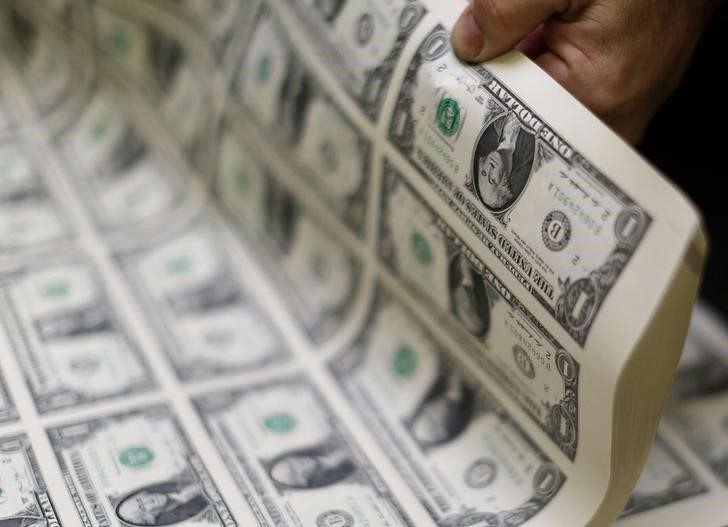Investing.com - The dollar dropped against the other major currencies on Wednesday, as markets were digesting the fact that China devalued its currency for the second consecutive day.
The yuan dropped to a four-year low against the dollar after the People's Bank of China set the yuan's midpoint rate weaker than at Tuesday's closing.
China devalued its currency by 2% in a surprise move on Tuesday to make its exports more competitive and shore up growth in the flagging economy.
The PBOC has described the move as a “one-off depreciation”, based on a new way of managing the exchange rate that better reflected market forces.
The euro hit one-month highs of 1.1130 against the dollar, with EUR/USD up 0.81% for the day, while EUR/CNY rallied 1.81% to a six-month peak of 7.11.
The dollar was lower against the yen, with USD/JPY down 0.56% at 124.42.
The yen was boosted by increased safe haven demand as steep declines in equity and commodity markets hit demand for riskier assets.
Elsewhere, the dollar was steady against the pound, with GBP/USD at 1.5562 and sharply lower against the Swiss franc, with USD/CHF tumbling 1.13% to 0.9770.
Also Wednesday, the Office for National Statistics said U.K. average weekly earnings, excluding bonuses remained unchanged at an annualized 2.8% in the three months to June.
Including bonuses, growth in average weekly earnings slowed to 2.4%, down from 3.2% in the three months to May.
The U.K. unemployment rate remained unchanged at 5.6% in the three months to June, in line with forecasts.
The number of people claiming unemployment benefits declined by 4,900 to 792,400 in July, the ONS said.
The Australian and New Zealand dollars eased off of six-year lows, with AUD/USD up 0.16% at 0.7316 and with NZD/USD gaining 0.58% to 0.6573.
The greenback slid lower against the Canadian dollar, with USD/CAD down 0.53% at 1.3044.
The U.S. dollar index, which measures the greenback’s strength against a trade-weighted basket of six major currencies, was down 0.63% at 96.62, the lowest level since July 31.
